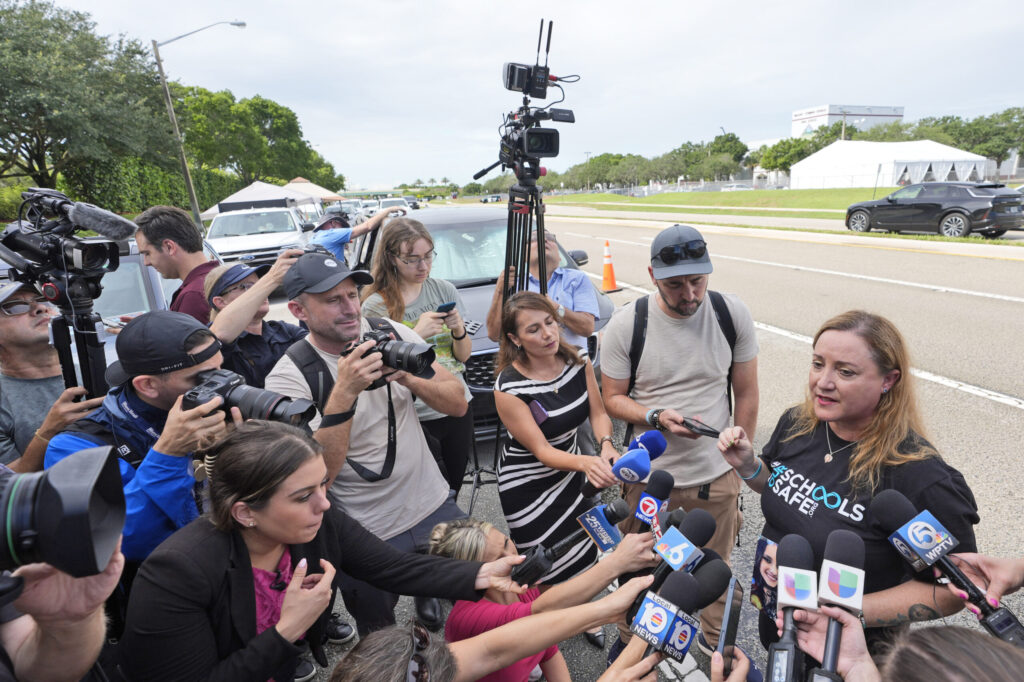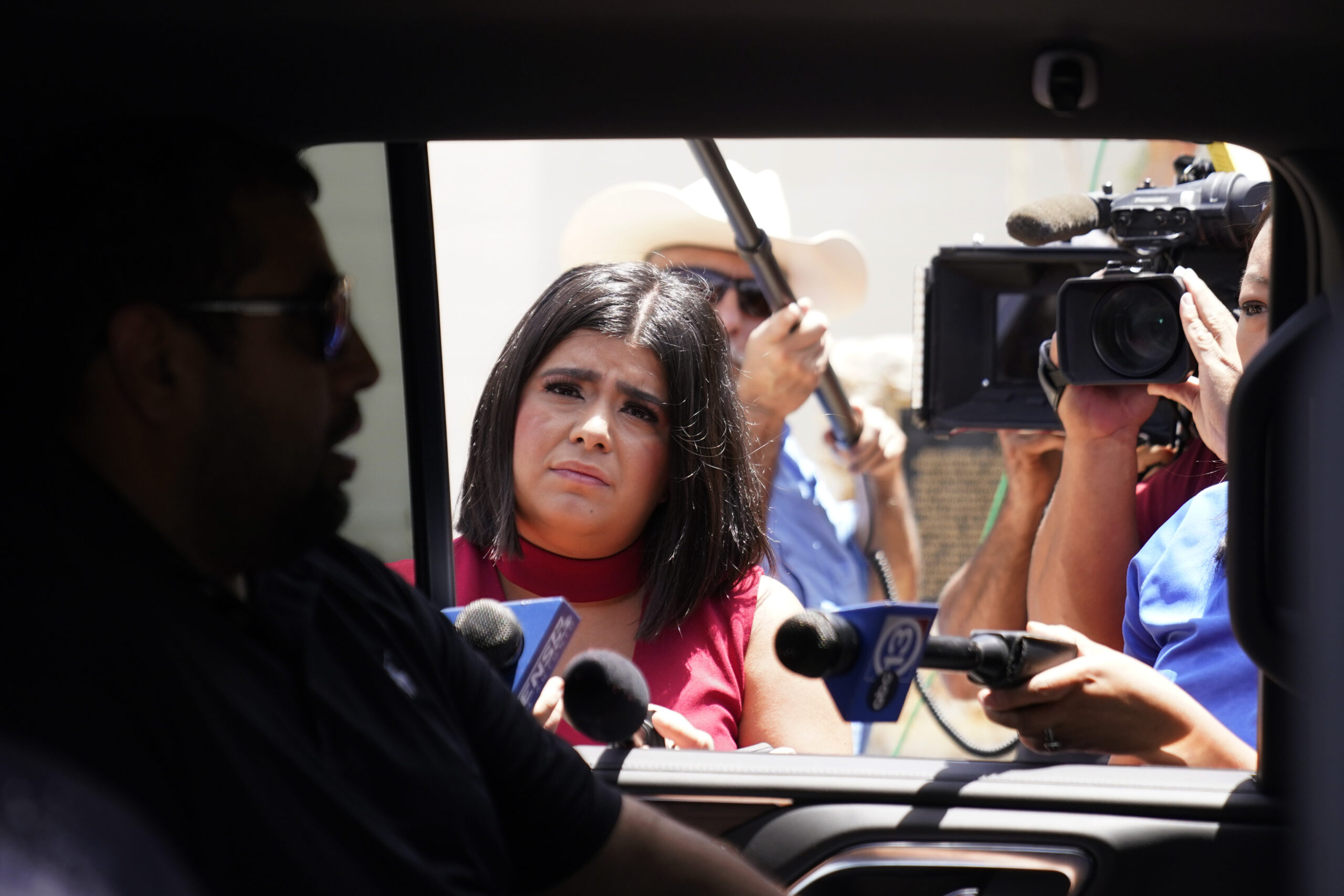Heather Martin remembers how angry she was at the media after surviving the 1999 Columbine High School shooting as a 17-year-old senior. Journalists “bombarded” traumatized teens with cameras and microphones as they looked for their families and friends, crowded memorials and neighborhoods, sensationalized the tragedy and the perpetrators, and often didn’t get the facts right.
Twenty-five years and too many tragedies later, there is no doubt that many American journalists are more attuned to the ethical considerations involved in covering mass shootings, but many issues remain. Martin, who now serves as executive director of the Rebels Project to support others impacted by mass violence, continues to see journalists act in ways that can negatively impact survivors. “Some mistakes still made are just baffling,” Martin said.
A new survey of more than 165 survivors from 48 U.S. communities impacted by mass shootings, both recent and from decades past, found that about half (47 percent) of those who engaged with the media in the aftermath found the experience to be exploitative. In some cases, even harmful.
In response, the Supporting Mass Shooting Survivors research project, the first large-scale effort to understand the needs of survivors, released new recommendations for journalists based on survivors’ experiences as part of its initial roll-out of survey findings and resources in mid-June.
“My hope is that the media will rethink their approach to working with survivors and include basic safeguards to protect and validate these individuals while still getting the interviews they need to do their jobs,” said Jaclyn Schildkraut, a national expert on mass shootings and the executive director of the Regional Gun Violence Research Consortium at the Rockefeller Institute of Government who leads the project.
As a journalism professor whose research focuses on mass shootings, I serve on the project’s advisory board and was consulted on these recommendations. I know some journalists will bristle at some of them, but with gun violence on the rise and public mass casualty attacks (though still rare) increasing in frequency, all journalists should consider how we can minimize harm. These recommendations offer a start.
Create spaces for survivors to tell their stories
One of the main findings of Schildkraut’s study overall was the role that “social acknowledgement” plays in post-traumatic growth. Survivors who feel that their unique experiences are acknowledged and appreciated are more resilient and less likely for the tragedy to define them, Schildkraut said.
Often, survivors who escape without physical wounds feel as if their experiences are discounted by the media. Martin, for example, hid in the school’s choir office with dozens of other Columbine students before they were evacuated by SWAT officers. She told me that journalists seemed to only want to know about the most horrifying bits. Because she didn’t see any of the shooting, it made her feel as if her story didn’t matter. “Like it wasn’t bad enough to warrant the trauma, the nightmares, the anxiety attacks,” she said.
Other survivors and victims’ family members say they felt pushed to talk about subjects, such as gun policy reform, that they weren’t ready to talk about.
The recommendations advise journalists to “value the stories of all survivors.” Many will want to talk — on their terms. Consider creating a portal or putting out a call for survivors who want to talk when they are ready. Be mindful that that is unlikely to be in the moments when they are walking away from the scene or at a reunification site, Schildkraut notes.
Obtain consent before filming or taking photos
This recommendation may be the most likely to make journalists recoil. Yes, we legally have a right to take images of anyone in a public space, even a close-up of a person reeling with grief. But should we? Do those images even help a story or the public after so many similar tragedies?
No one expects journalists to stop doing their jobs at the scenes of major crimes. This recommendation isn’t about “wide-angle, generic images where multiple people are in it and are largely unnamed,” Schildkraut clarified.
The recommendations advise journalists to approach survivors without a camera or audio device and ask permission before recording. They also suggest that journalists prepare the survivor with a basic understanding of the general framing of the story.
No traumatized person should have to walk through a gauntlet of cameras and reporters shouting questions as they leave a crime scene, a reunification center, or a memorial. Martin remembers her sister getting so angry at the cameras surrounding a private gathering of Columbine survivors that she screamed and spit at them, and Martin was dismayed to see the same thing happen to students after the 2018 high school shooting in Parkland, Florida.
Schildkraut said she thinks initial news stories should focus on reporting the facts on the event and the investigation from official sources trained to be on camera and speak to the press. She wants journalists to consider what purpose is served by photographing or filming someone in the worst moment of their lives or pushing to interview them before they have had a chance to process what they have experienced. (Often the information they share in these moments isn’t accurate or reliable anyway.) “It isn’t for the survivors’ benefit,” said Schildkraut. “It is being done for ratings.”
Avoid featuring the perpetrator alongside survivors
It is difficult to understand why someone would decide to open fire on a crowd. But we know from law enforcement investigations and academic research that many mass public shooters are motivated by the quest for infamy. They want our attention. Media outlets should avoid running images of the perpetrators or using their names excessively or in headlines.
When it comes to working with survivors, recognize that many of them are very attuned to this issue and may not want their story juxtaposed with information on the mass murder or images of the crime. Martin, for example, was upset by some TV pieces on the 20- and 25-year marks of the Columbine shooting, which cut to footage of the attack, images from the scene, and pictures of the murderers during her interviews.
Michael Morisette, whose 20-year-old daughter Kristina was killed in the mass shooting in Thousand Oaks, California, in 2018, said journalists should also remember that survivors and other vulnerable people may be in their audience. Now a peer support specialist working with other survivors, Morisette said he thinks journalists should make it clear in the headline if the story is about the gunman or if it is about survivors, but it shouldn’t be about both.
“Remember that many people that follow a story could be either impacted themselves by it or are dealing with another life experience, and they are looking for stories of hope and healing,” Morisette said.
Consider the media footprint

Many of the complaints about coverage after mass shootings are about the national media. They swoop into town, often with large crews, crowd streets and memorials, take up hotel rooms that then aren’t available to family members, aggressively seek out interviews with those most impacted, and then leave the community when the next big story comes along. The recommendations suggest media outlets rely on local affiliates or work together in a pool system to lessen this impact.
David Guarino, a former journalist, now runs the Boston-based nonprofit Survivors Say, which offers media strategists and spokespeople free of charge to people affected by high-profile crimes. He told me that this issue crystallized for him after a visit to Boston by members of the British royal family. International media outlets collaborated to set up an orderly pool to cover their tour of a local nonprofit. Less than two months later, a teenager was shot and killed in Boston, and his mother was inundated by the press, who surrounded her house with cameras.
“A pool for the prince and princess, no shouted questions, no harried push for answers. The opposite for the mother of a young murder victim,” Guarino recalled in an email. “Shouldn't a homicide survivor be afforded at least the same, if not better, treatment than the royals?”
When I speak about covering mass shootings, I give advice that journalists never want to hear: Sometimes you should stay home. Especially if you are a famous journalist and require a crew and a staff of hair, makeup and craft services. Check your privilege and consider whether you are doing more harm than good by being there.
Follow the guidance for trauma-informed reporting
It’s become a trope, but one that many journalists can’t seem to avoid: please don’t ask a survivor or a victim’s family member how they feel. Don’t tell them you understand, because you don’t. Don’t compare your experience or others’ experiences to theirs. The recommendations advise journalists to consider adopting language that reflects survivors’ experiences, such as avoiding the word “anniversary,” which is celebratory, and instead using “year mark.”
Journalists are trained to be independent observers, and many believe that they need to record tears and emotions, but if someone breaks down in an interview, maybe we should turn the camera away and offer them a hug, said Anastasiya Bolton, a former TV reporter who extensively covered crime, including several mass shootings, and now helps agencies navigate the media. She also thinks it is journalists’ responsibility to think about what someone will experience after the interview is over.
“We ask them to share their experiences and their stories. . . . It can be cathartic, but it also can be traumatic,” she said. “We leave, we put the story on the air, and they have to sit there with it.”
Morisette told me that he believes it is time for the journalism industry to take more responsibility to make sure all employees have been trained to work with people in trauma. There will always be people assigned to cover tragedies who have never done stories like this before.
“If everyone, all the way up, understands what the community needs and respects that, it is going to make a difference,” he said. “A lot of stuff has changed, and you can’t say, ‘This is the way we always did it.’”



